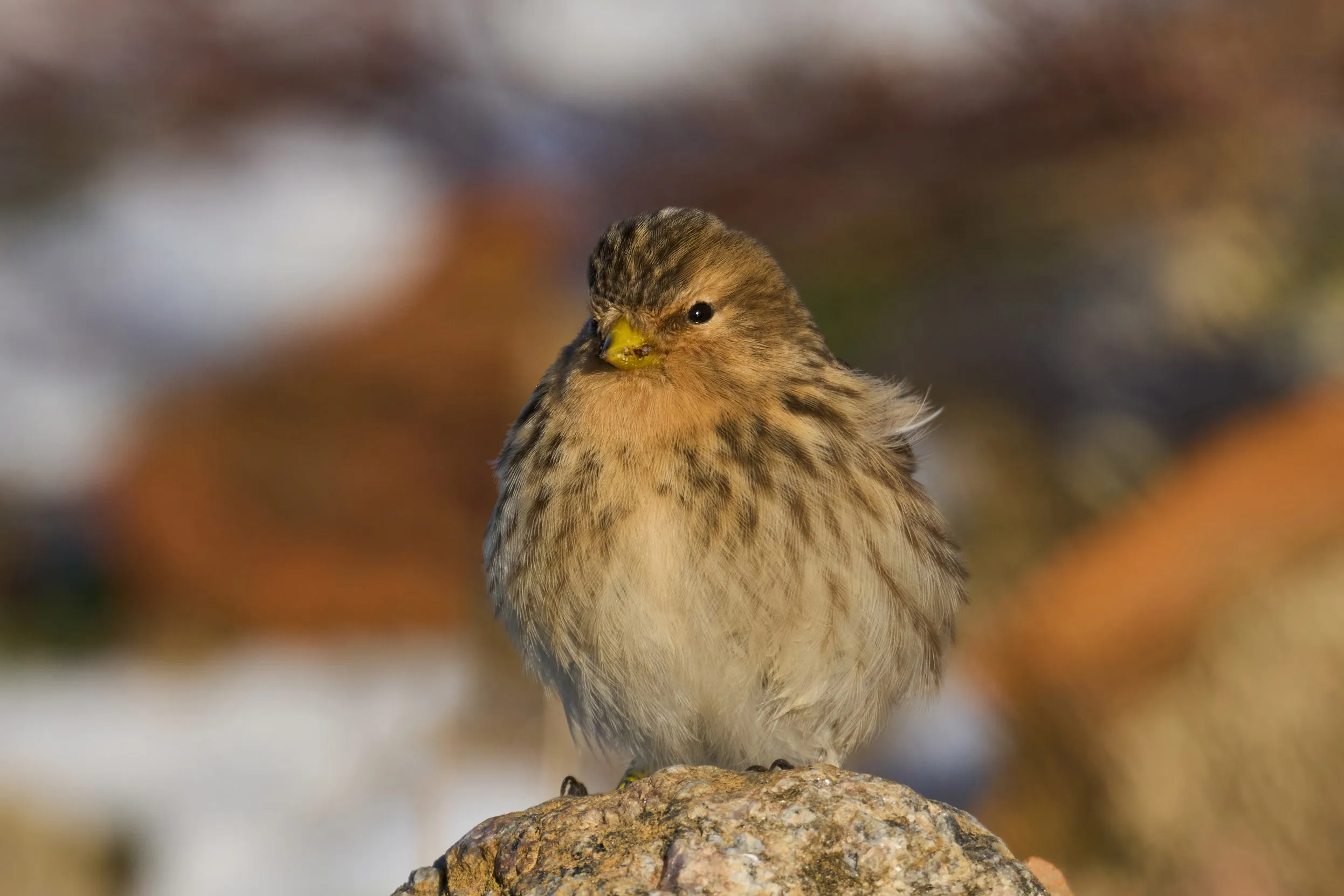
Advice
Twite Conservation - Advice for farmers
The twite breeds on moorland fringes in the upland areas of Northern England and Scotland.

On this page
Twite in brief
- UK numbers were fairly stable between 1970 and 1990, but have undergone a dramatic decline in Northern England since then.
- The population in the Southern Pennines is estimated to have decreased by 80% between 1990 and 2000.
- The main cause of this decline is likely to have been the reduction in the number of haymeadows, as these provide an important seed source during chick-rearing.
Key points
- Provide seed-rich feeding areas, such as late-cut hay meadows, within 2km of the moorland nesting areas.
- Maintain patches of bracken on steeper slopes to provide nesting habitat for twites.
- Manage heather moorland to ensure there are areas of tall heather close to the enclosed in-bye, preferably on gulley sides.
- Twites will benefit from annual weeds in root crops or cereals and their stubbles on upland farms.

Twite
The Twite is a small, brown finch closely related to the Linnet, but with a shorter tail and stubbier beak.
What this species needs
An abundance of seeds throughout spring and summer
Both adults and chicks feed on small seeds, especially those of dandelion and sorrel, which are found
in hay meadows close to the moorland edge.
Tall ground vegetation for nesting
Twites nest on moorland edges, usually in the plant litter under small patches of bracken or in tall
heather.
How to help
On in-bye
- Retain or restore some hay meadows and cut after 15 July to provide seed food. Do not control broad-leaved plants such as dandelion and sorrel, as these are vital food plants for twites.
- Avoid applying fertilisers or herbicides to unimproved hay meadows.
- Leave a 2m margin or field corner of hay or silage fields unfertilised and uncut to provide some seed food for chicks throughout the summer. These areas can be cut or grazed in August.
- Maintain or re-introduce arable fodder crops, such as cereals or root crops, on the farm to provide a rich seed source for birds.
- Allow weeds to set seed in fodder cereal and root crops. Alternatively, a wild bird cover strip can be created by establishing a mix of seed-bearing plants such as kale and rape to provide seed food.
- Retain weedy areas along field edges, roadside verges or rough patches.
- Some seed can be provided on extensively managed pastures, especially those managed with light cattle grazing.
On moorland
- Retain small patches of bracken on steep slopes as twites will often nest under this. If control is necessary, then conduct management as late as possible (ideally in August). Do not burn areas with small bracken stands as this will encourage future abundant growth of bracken, which may then need to be controlled.
- Maintain heather by rotational burning or light grazing, so there are always some areas of young, tall heather close to the enclosed in-bye.
- Exclude stock along a burn side or steep slope to encourage taller vegetation for nest sites.
- Avoid improving unenclosed grassland by liming, fertilising, draining or re-seeding.